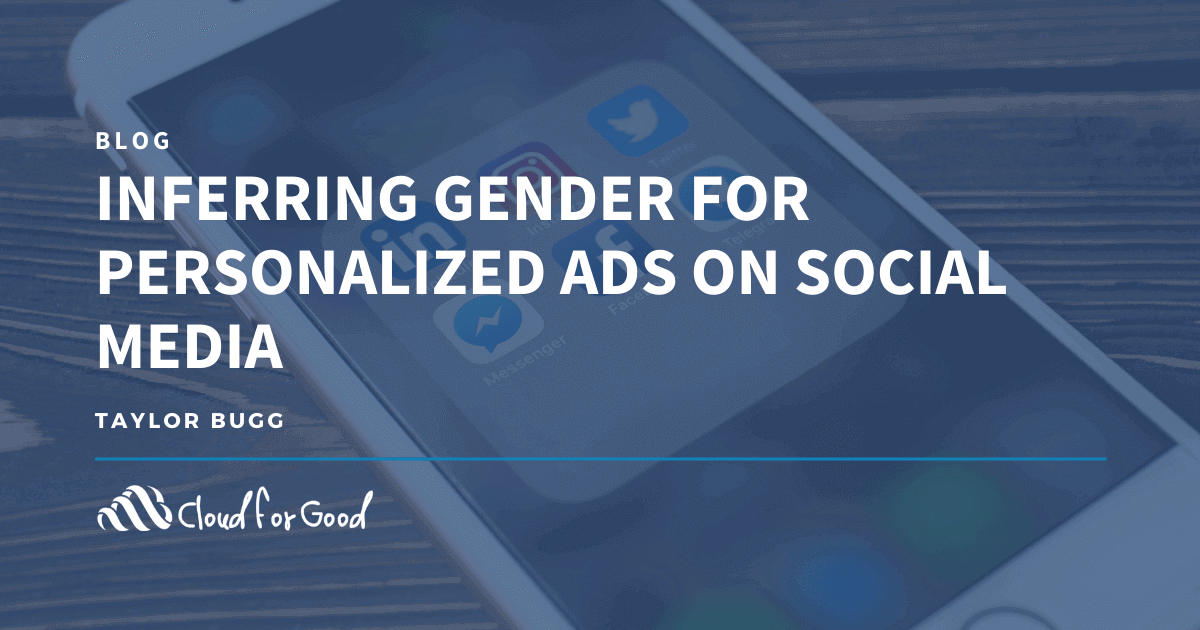As a frequent Salesforce Social Studio user, I often find myself exploring the new avenues that the tool offers. While diving into a Cloud for Good-specific Workbench within the Analyze feature, I discovered something interesting pertaining to the demographics of the individuals who interact with our brand on Twitter – over 90% of the individuals are classified as male within the social platform. However, this goes far beyond individuals like Tal Frankfurt (@talfrankfurt), Akash Mishra (@Akash_SFDC), and Tom Blamire (@Salesforce_Tom), many of our partners and client brands are also identified as male on Twitter. Why is Twitter inferring gender, and what does it mean?
Why is Twitter Assuming Gender?
Back in 2017, Twitter released an update sharing that the social media platform was assuming the gender of its users if not previously identified upon profile registration. The assumption was solely based upon how users interacted with various content on the social platform.
Does this mean that if a non-binary individual likes a tweet featuring stereotypical female products, like makeup, the individual will automatically be classified as female?
When the update was initially released, Twitter announced that the purpose was to provide more targeted advertisements, which equates to more ad revenue. As a marketer, I understand the desire for more insightful information, and how important it is to serve individuals with highly specific, targeted advertisements. However, as a human, I know how important it is to be represented…
Not the First Platform to Drop a Trail of Crumbs for Personalized Ads
Though the Twitter platform update did cause quite the stir in 2017, the idea of inferring a user’s gender is not new or uncommon. Many other platforms, including Google, use “inferred demographics” to gain more insights about individual users to provide personalized ads.
These demographics are based on the websites that users have visited – every time a user visits a new site, Google drops a little cookie, allowing the search engine to track where you have been across the internet. Like the children’s fairy tale Hansel and Gretel, you are leaving a trail of crumbs across the internet as you are searching, researching, or even watching a new show on Netflix.
How Inferred Demographics Can Skew Analytics
So now that we know why Twitter and other platforms are assuming demographics, what does this mean for personalized analytics and reporting? As I mentioned previously, while exploring the Analyze tool located within the Salesforce Social Studio platform, I discovered that nearly all the users interacting with Cloud for Good (@cloud4good) on Twitter are classified as male. As shown in the image below, Salesforce.org, Marketing Cloud, Nonprofit Dreamin’, and even Cloud for Good are classified as male. This is particularly interesting because the Cloud for Good Twitter account’s gender is set as non-binary.

This information can dramatically skew demographic-based analytics, especially because businesses, organizations, and institutions are being classified as males. Marketers should pay close attention to these insights, as it may affect buying personas and the overall insights on who their followers really are.
Inclusivity for the Future
For transgender, genderfluid, and non-binary individuals, the idea of a platform assuming gender or not providing inclusive gender options can be deeply upsetting. In efforts to solve this problem, Twitter and other platforms have enabled users to edit their genders, providing the options of “male, female, and add your gender.” While this is only a small effort, it does make a difference as advocates continue to fight for bigger strides in creating a more inclusive world.

Updating your advertisement preferences:
- Click here to find out how Google has inferred your demographics and interests – you can also use this link to turn off personalized ads.
- Frequently check in on your personalized ad settings.
- Adjust settings based on your actual demographics and interests.
What Does This Mean for Marketers?
While taking advantage of personalized advertisements is a great way to get in front of your audience, you may not always be connecting with those intended. With inferred demographics and interests, we are not serving as targeted ads as we may think. In the grand scheme of things, we are likely targeting a large majority of those intended with our paid advertisements, and the idea of inaccurate inferred demographics and interests is important to keep in mind.





